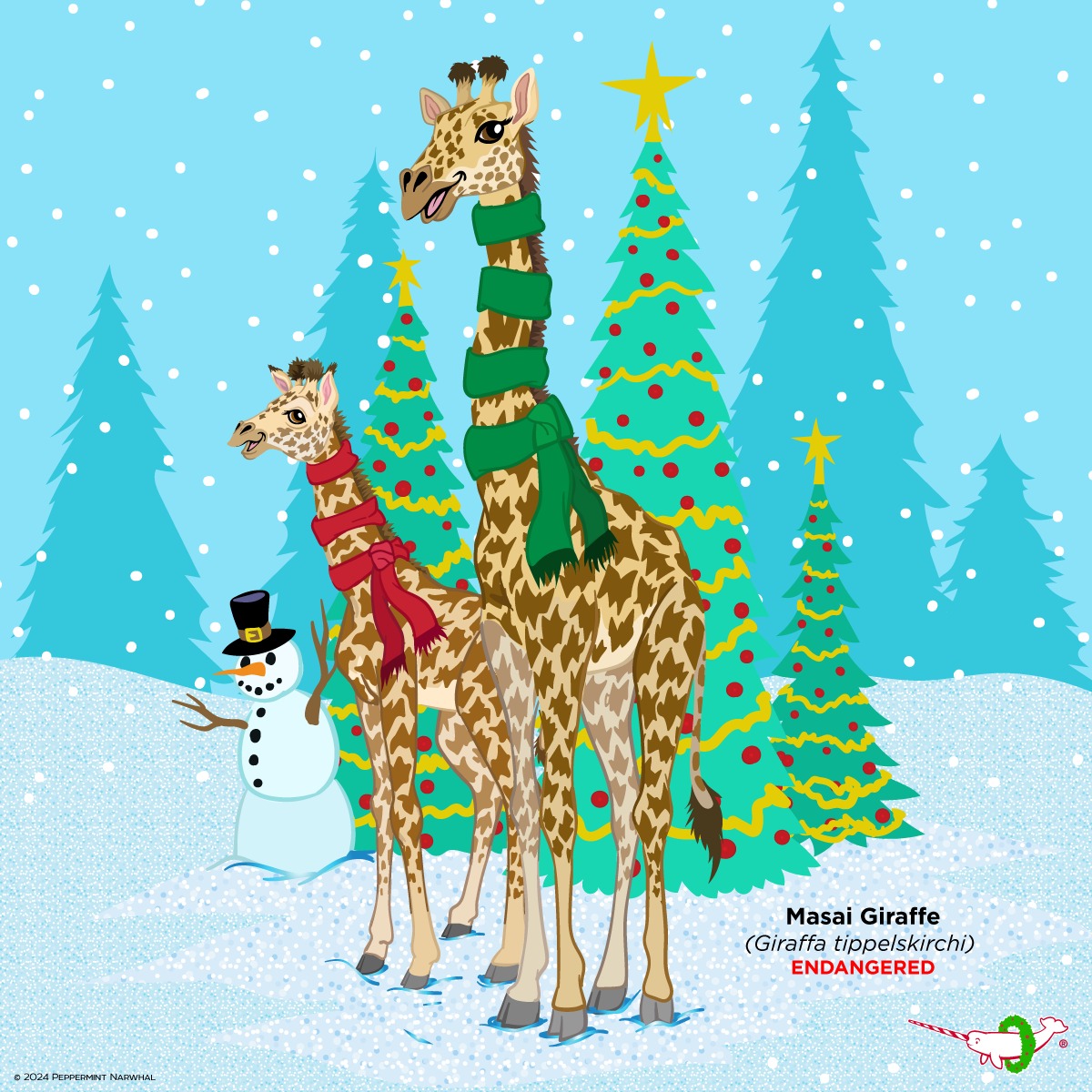- The Masai Giraffe (Giraffa tippelskirchi), its biology, and reproduction process.
- Challenges facing Masai Giraffe populations and conservation efforts.
- Role of zoos and wildlife conservation organizations in protecting Masai Giraffes.
- Holiday-themed ornaments featuring Masai Giraffes and their importance in raising awareness.
- Connection to commercial products that support animal conservation initiatives.
The Masai Giraffe, scientifically known as Giraffa tippelskirchi, stands uniquely as the largest giraffe subspecies. Native to the savannahs of Kenya and Tanzania, these magnificent creatures tower over their landscape, largely due to their distinctive elongated necks and legs. The Masai Giraffe distinguishes itself from other giraffe subtypes by its distinctive, leaf-shaped spots that appear in a complex, jagged pattern across its body, extending down to the hooves. This camouflage not only provides protection from predators but also contributes to the overall aesthetic grace that these animals effortlessly exude.
The reproductive process of the Masai Giraffe is a fascinating spectacle of nature. A typical gestation period extends from 14 to 15 months, culminating in the birth of a calf that can stand an impressive six feet tall and weigh between 100 to 150 pounds at birth. The birthing process is unique; the female giraffe remains standing, utilizing gravity to aid the delivery of the calf. This initial leap into the world is essential for the young giraffe’s survival, as it must quickly learn to stand, walk, nurse, and eventually run all within hours of birth. Nutritional dependence on the mother continues until about 13 months when the calf is weaned but often remains in proximity to its mother for up to 18 months. Understanding this reproductive cycle is crucial for effective captive breeding programs aimed at preserving this species.
Conservation of Masai Giraffes is an urgency compounded by several challenges that threaten their natural habitats. Habitat loss due to agricultural expansion and urban development, poaching for meat and hide, and human-wildlife conflict pose significant threats. The giraffe populations have declined sharply over the past century, prompting their listing as a vulnerable species by the International Union for Conservation of Nature (IUCN). Conservation organizations are implementing measures to combat these threats by establishing protected areas, community awareness programs, and initiatives to mitigate human-wildlife conflicts. Collaborative efforts between governments, non-profits, and local communities are integral to the sustained recovery of giraffe populations.
The role of zoos in conservation cannot be understated, as they serve not only as educational centers but also as participants in breeding and reintroduction programs. Wildlife conservation organizations partner with zoos around the globe to share research, genetic data, and experiences essential for effective conservation strategies. These institutions serve as custodians of species at risk, maintaining genetic diversity through controlled breeding programs. Public engagement is also enhanced by the opportunity to experience these majestic animals up-close, fostering a deeper appreciation and understanding among visitors.
In light of raising awareness, one creative avenue employed is the introduction of holiday-themed ornaments featuring endangered species such as the Masai Giraffe. These ornaments not only add a unique touch to any festive setting but also serve a greater purpose. Through the purchase of these items, consumers are indirectly contributing to wildlife conservation efforts. Companies like Peppermint Narwhal have brilliantly combined art, commerce, and conservation to create products that resonate with buyers while supporting the cause of preserving biodiversity. The Masai Giraffe-themed holiday ornament is not just a decorative piece, but a reminder of the beauty and fragility of our natural world.
Connecting conservation efforts to commercial products helps widen the reach and impact of awareness campaigns. Supporting such initiatives allows consumers to play a part in conservation, all while enjoying new and creative products. Websites like Peppermint Narwhal facilitate this by offering a platform that combines shopping with advocacy, making it easy for international shoppers to participate as well.
While the Masai Giraffe continues to face considerable threats in its natural habitat, the coordinated efforts of conservationists, zoos, and consumers provide a beacon of hope. By educating the public, engaging communities, and fostering connections between human activity and wildlife conservation, we pave the way for a sustainable future. As we invest in holiday ornaments and other products, we are not merely adding to our collections but investing in an initiative aimed at saving the Majestic Masai Giraffe for generations to come.
*****
Source Description
HOLIDAY – Happy Family – Masai Giraffe
The Masai Giraffe (Giraffa tippelskirchi) is the largest giraffe species. After a gestation period of 14-15 months, the mother gives birth standing up, relying on gravity to deliver the calf. The calf is about 6 feet (1.823 m) tall and weighs 100-150 pounds (45.36-68.04 kg). Within hours of birth, the calf can stand, walk, nurse, and run. It’s weaned at 13 months and usually stays with its mother for a year and a half.
2024 Holiday Ornaments, like this Masai Giraffe are back in stock, but quantities are again getting low, so get your before they sell out for good. Get yours today at:
www.peppermintnarwhal.com/s/search?q=ornaments
Shop for the 2025 Animal Holiday Calendar
& bio-diverse selection of animal focused products.
Visit: www.peppermintnarwhal.com
International Shoppers visit our store on Etsy:
www.etsy.com/shop/PeppermintNarwhal


